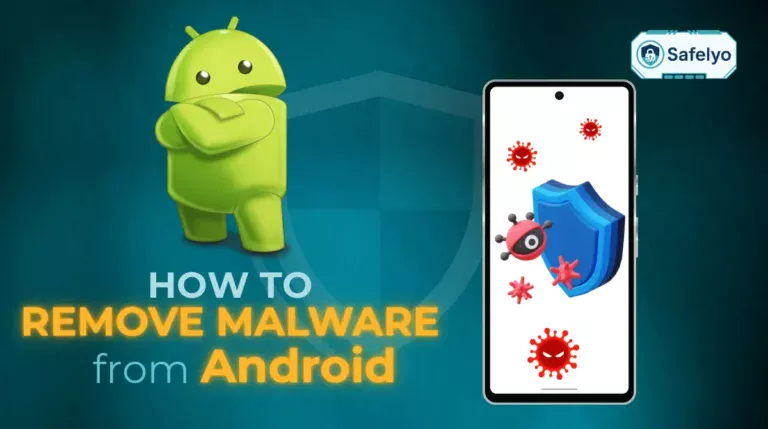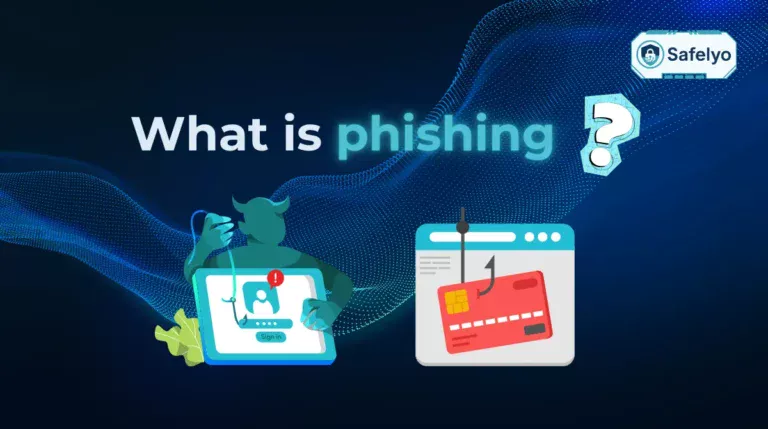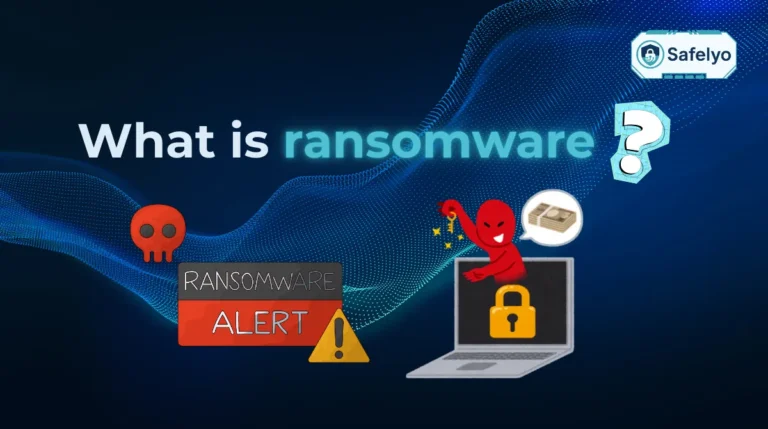The question of whether you do I need antivirus for Mac is one of the oldest and most passionate debates in the Apple community, fueled by the long-standing myth that these machines are simply immune to threats.
As cybersecurity specialists here at Safelyo, we’ve seen this common belief give countless users a false sense of security. In today’s digital world, where online threats are more sophisticated than ever, relying on past reputation alone isn’t just outdated—it’s a risk. This guide is here to provide an honest, balanced answer based on the facts of 2025.
After reading, you will have a crystal-clear understanding of:
- The powerful security layers Apple already builds into macOS.
- The real-world risks and malware that can still find their way through.
- Whether adding an extra layer of protection is the right call for you.
Let’s cut through the noise together. I will walk you through everything you need to know to separate fact from fiction and make the smartest decision for your digital security.
1. Unpacking the “Macs don’t get viruses” myth
For years, the phrase “Macs don’t get viruses” has been repeated so often that it feels like a universal truth. As someone who has worked in cybersecurity for over a decade, I can tell you this belief didn’t just appear out of thin air. It has a historical basis.
Back in the day, Macs had a much smaller market share than PCs. Think of it this way: if you were a digital pickpocket, would you work in a small, quiet town or a massive, bustling city? Naturally, cybercriminals focused their energy on the much larger pool of Windows users. On top of that, the core architecture of macOS (which is based on UNIX) has always been designed with stronger security principles from the ground up.
But here’s the reality check for 2025: that small town has grown into a thriving metropolis. Macs are now incredibly popular, seen everywhere from coffee shops to corporate boardrooms. This popularity has painted a giant target on their back, making them a very attractive and profitable platform for criminals.
This brings us to a crucial distinction I always have to make: there’s a big difference between a “virus” and “malware.”
- Think of malware as the general term for any harmful software, like the word “illness.”
- A virus is just one specific type of malware, like the common cold. But there are many other digital illnesses your Mac can catch, such as adware (annoying pop-up ads), spyware (steals your passwords), and ransomware (locks your files and demands money).
While true viruses are still less common on macOS, the system is absolutely vulnerable to this wider range of malware. In fact, reports from security firms like AV-TEST and Malwarebytes consistently show a dramatic increase in threats specifically targeting Mac users year over year. The old myth of immunity is not just outdated; it’s a dangerous liability.
2. A deep dive into macOS built-in security features
Now, just because the “invincibility” myth is busted doesn’t mean your Mac is a sitting duck. Far from it. Apple invests heavily in security, and macOS comes with a formidable, multi-layered defense system right out of the box. Before we even consider third-party software, it’s crucial to understand and respect the powerful tools Apple already gives you.
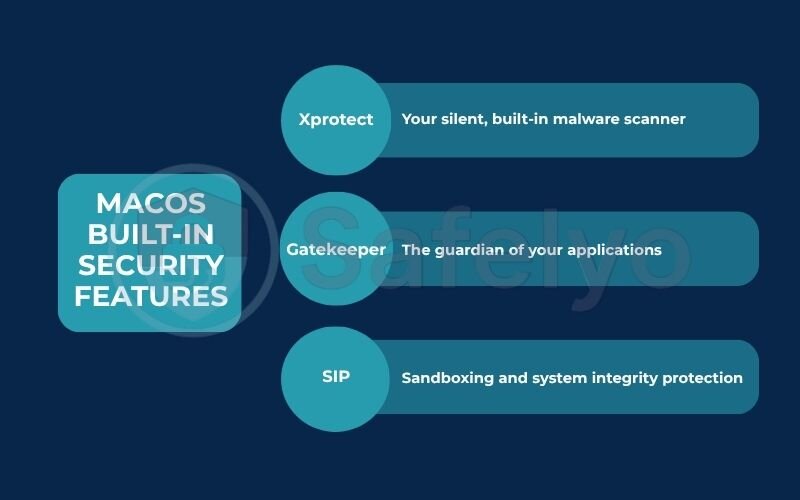
Think of your Mac’s security not as a single wall, but as a medieval fortress with several layers of defense. Let’s look at the key guardians protecting your castle.
2.1. Xprotect: Your silent, built-in malware scanner
First up is XProtect, Apple’s own anti-malware technology that works silently in the background.
How it works: The simplest way to understand XProtect is to think of it as a bouncer at an exclusive club. Apple provides this bouncer with a list of known troublemakers (a database of known malware signatures). When you download a file, XProtect quickly checks if it’s on the list. If it finds a match, the file is blocked from running. It’s your first, automatic line of defense against common threats.
Its limitations: The bouncer is only as good as their list. XProtect is excellent at stopping threats that Apple has already identified. However, it’s not designed to detect brand-new, unknown malware (called “zero-day” attacks) or clever variations of existing threats. A new troublemaker, not yet on the list, can walk right past.
2.2. Gatekeeper: The guardian of your applications
Next is Gatekeeper, which isn’t about what a file is, but where it comes from. Its job is to ensure you only install software from trusted sources.
How it works: By default, Gatekeeper is set to only allow apps from two places: the Mac App Store or from “identified developers” who have been officially registered with Apple. You’ve likely seen this in action in your “Security & Privacy” settings. It’s like your fortress, only accepting messengers who come from the royal court (App Store) or have an official, sealed letter from a trusted ally (identified developer).
Its limitations: Gatekeeper can be bypassed. First, you, the user, can manually override it to install an app from an unknown source. Second, determined cybercriminals can sometimes steal or fraudulently acquire a developer certificate, essentially forging that sealed letter to trick Gatekeeper into thinking their malicious app is legitimate.
2.3. Sandboxing and system integrity protection (SIP)
These two features are arguably the most powerful and sophisticated parts of your Mac’s defense.
- Sandboxing: As a security expert, I love this concept for its simplicity and power. Think of sandboxing as giving each app its own small, locked office. An app can do whatever it needs to do inside its own office, but it is forbidden from snooping around in other offices or accessing critical building files (your core system files). This containment is a cornerstone of macOS security.
- System Integrity Protection (SIP): If sandboxing puts apps in locked offices, SIP protects the very foundation and structural walls of the building. It’s an even deeper layer of security that prevents anyone, including you as the admin, from modifying the most critical parts of the operating system.
The benefit: This layered approach is brilliant. Even if a malicious app manages to get past XProtect and Gatekeeper and starts causing trouble, the damage is largely confined to its own “sandbox.” It can’t easily infect other apps or compromise the entire operating system.
3. When Apple’s protection isn’t enough
While Apple’s fortress is impressive, no defense is perfect. As I’ve learned from countless security incidents, the strongest locks in the world don’t matter if you willingly open the door for a stranger. Many modern threats aren’t designed to smash through Apple’s technical walls; they’re designed to trick you into letting them in.
This is where Apple’s protection can fall short. It’s not a failure of the technology itself, but a reality of the threat landscape. Here are the most common scenarios where your Mac becomes vulnerable.
3.1. Common Mac malware threats you should know
The term “malware” can feel a bit vague, so let’s make it real. These are the specific types of digital intruders we see targeting Mac users most often:
- Adware: These are the pests of the internet. They infect your browser to bombard you with unwanted pop-up ads, banners, and redirects. While not directly damaging, they slow your Mac down and severely compromise your browsing experience.
- Spyware: Just as creepy as it sounds. This malware hides on your system and secretly records your information. This can include everything from your passwords and credit card numbers to your private messages.
- Trojans: This is one of the most successful threats against Macs. Like the mythical Trojan Horse, this malware disguises itself as legitimate software. A famous example was the Shlayer Trojan, which for years masqueraded as an Adobe Flash Player update, tricking millions of users into installing adware.
- Ransomware: This is the digital equivalent of kidnapping. Ransomware encrypts your personal files—your photos, documents, and videos—and holds them hostage until you pay a fee. While rarer on Mac than on PC, it is a devastating and growing threat.
- Cryptominers: This sneaky malware turns your Mac into a zombie worker for criminals. It secretly uses your computer’s processing power to “mine” for cryptocurrency, causing your Mac to run extremely slow, overheat, and jack up your electricity bill.
3.2. How to tell if your Mac is infected: Key warning signs
So, how would you even know if one of these threats slipped through? Malware isn’t always obvious, but it usually leaves clues. Be on high alert if you notice any of these red flags:
- Your Mac suddenly runs very slowly, or the fan is constantly spinning at high speed. This is a classic sign that something is draining your resources in the background, like a cryptominer.
- You see unexpected ads and pop-ups all over your browser, even on reputable websites. This is the tell-tale sign of an adware infection.
- Your browser’s homepage or default search engine changes without your permission. This is a common tactic used by browser hijackers to direct you to malicious sites.
- You find new applications in your folder that you don’t remember installing. Trojans and other malware often install other unwanted programs without your knowledge.
- You get strange, urgent security warnings demanding you call a number or install a “cleaner” app. These are almost always scams trying to frighten you into installing more malware or giving up your financial info. The real macOS warnings are much more subtle.
Absolutely. This section is the core of the article, where we deliver the final, nuanced answer. I’ll make sure to frame it as direct, actionable advice based on my professional experience.

4. Do I need antivirus for Mac?
So, we’ve established that the “invincible Mac” is a myth, but also that Apple’s built-in defenses are genuinely strong. This brings us back to the million-dollar question: Do you really need an antivirus?
After years of advising everyone from my tech-phobic parents to enterprise IT departments, my honest answer is this: it depends entirely on who you are and how you use your Mac. There is no one-size-fits-all solution. Your digital habits are the single biggest factor in determining your risk level.
To make it simple, I break users down into two main groups. Find the one that sounds most like you.
THE "LOW-RISK" USER: The careful home browser
This is someone who uses their Mac for basic tasks: browsing well-known sites like news outlets and social media, streaming videos, and writing emails. Crucially, this person almost exclusively downloads new software from the Mac App Store and is very cautious about clicking on strange links or email attachments.
For this user, is an antivirus strictly necessary? Perhaps not. Apple’s built-in security is designed to handle this kind of low-risk environment quite well. However, even the most careful person can make a mistake. An antivirus for this user is like having a high-quality fire extinguisher in your kitchen. You hope you’ll never need it, but it provides invaluable peace of mind knowing it’s there just in case.
THE "MEDIUM-TO-HIGH RISK" USER: The active downloader, student, or professional
This category covers a much wider range of people. This includes:
- Students who need to download various applications and files for their courses from different sources.
- Professionals who handle sensitive work data, client information, or financial records.
- Creatives or tech enthusiasts who frequently download software, plugins, or tools from developer websites and repositories like GitHub.
- Anyone who uses peer-to-peer file-sharing or downloads from torrent sites.
If any of these describe you, my recommendation changes from “nice to have” to “a highly recommended, essential layer of security.” The more doors and windows you open to the internet by downloading files from various sources, the greater the chance that something malicious will slip in. For this group, an antivirus isn’t just for peace of mind; it’s a proactive tool that actively guards against a much wider and more realistic set of threats.
To make it even clearer, here’s a simple breakdown:
| User Profile | Risk Level | Safelyo’s Recommendation |
| The Casual Browser (Only uses App Store, browses major sites) | Low | Apple’s built-in security is strong. Consider an antivirus for complete peace of mind. |
| The Student / Professional (Downloads apps, handles sensitive data) | Medium-High | Highly recommended. An antivirus provides a crucial safety net against modern threats. |
| The Power User / Downloader (Uses torrents, tries lots of software) | High | Essential. You are a prime target, and a dedicated antivirus is a must-have tool. |
Read more:
5. The added benefits of modern Mac antivirus suites
If you’ve decided that an antivirus is a smart move for you, it’s important to understand that you’re not just getting a simple “virus scanner” from the early 2000s. The best security products today are comprehensive suites, designed to protect you from a whole range of modern digital dangers.
From my experience at Safelyo, I often find that the greatest value of a modern antivirus suite isn’t in the malware it finds after it’s on your Mac, but in the countless threats it prevents from ever reaching you in the first place.
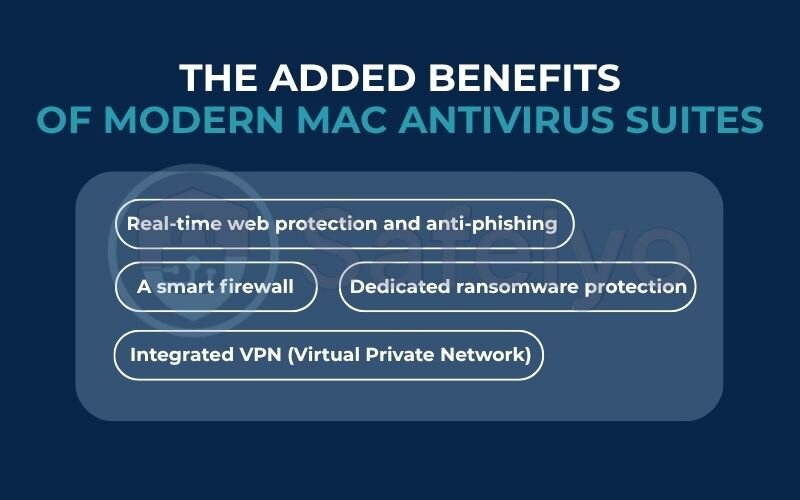
Think of it less like a doctor who treats you when you’re sick, and more like a personal security guard who stops trouble at the door. Here are some of the key features you’ll find in a quality Mac security suite:
Real-time web protection and anti-phishing
This is a huge one. Before you even click on a dangerous link in an email or a search result, the software blocks you from accessing a known malicious or fraudulent website. It’s like having a guard who checks every website’s ID before letting it load, saving you from countless phishing scams.
Modern antivirus tools have specialized modules that monitor for suspicious behavior, like an app trying to rapidly encrypt your files. If it detects this, it can immediately shut down the process, protecting your precious photos and documents from being held hostage.
A smart firewall
While macOS has a built-in firewall, the ones included in security suites are often more user-friendly and powerful. They monitor all the network traffic flowing in and out of your Mac, blocking unauthorized attempts to access your computer and alerting you to suspicious connections.
System optimization tools
Many suites come with bonus tools that can help clean up junk files, manage startup items, and uninstall apps properly, which can help keep your Mac running smoothly.
Integrated VPN (Virtual Private Network)
Some top-tier antivirus packages now include a VPN. This encrypts your internet connection, making it perfect for protecting your privacy when you’re using public Wi-Fi at a café, airport, or hotel.
6. FAQ about antivirus for Mac
We’ve covered a lot of ground, but some questions come up time and time again. Here are quick, direct answers to the most common queries we hear about Mac security.
But isn’t macOS’s built-in security enough for the average user?
For very careful users who stick to the App Store and well-known websites, it provides a strong foundation. However, it primarily protects against known malware and offers limited defense against phishing, adware, or brand-new “zero-day” threats. A good antivirus provides a more comprehensive safety net that covers these gaps.
Do Macs have built-in antivirus?
Yes, in a way. macOS includes a technology called XProtect, which acts as a built-in anti-malware scanner. It works silently in the background to block known malware signatures. However, it is not a full-featured antivirus suite and lacks many of the proactive protections found in dedicated software.
Does Apple automatically have virus protection?
Yes, Apple’s protection through XProtect is automatic. It updates its malware definition list in the background and scans files without you needing to do anything. This provides a baseline level of security against common, known threats.
Will installing an antivirus slow down my Mac?
This is a common concern, but a valid one. While older antivirus programs were notorious for hogging resources, modern, reputable antivirus software for Mac is specifically designed to be lightweight and have a minimal impact on system performance. Always choose a well-reviewed product from a trusted brand to ensure efficiency.
Is it safe to use a Mac without an antivirus?
It can be, but it depends entirely on your risk level and online habits. For a low-risk user, it’s safer than using a Windows PC without protection. For anyone who frequently downloads software from the internet or handles sensitive data, going without an antivirus is an unnecessary risk.
Are Macs good at preventing viruses?
Yes, Macs are very good at it. Thanks to a combination of their UNIX-based architecture, Gatekeeper, Sandboxing, and XProtect, macOS has excellent built-in defenses that make it a difficult target for traditional viruses. However, they are still vulnerable to a wider range of malware, like adware, spyware, and trojans.
7. Conclusion
So, to finally answer the question, “Do I need antivirus for Mac?”, my expert verdict is a nuanced one: while it may not be an absolute necessity for every single user, it is an incredibly wise and proactive investment in your digital security.
The landscape has changed, and relying on old myths is no longer a viable strategy. Let’s recap the key takeaways:
- The “Macs don’t get viruses” myth is officially busted. While inherently secure, Macs are a growing target for a wide range of malware.
- Apple’s built-in security is powerful but has limits. It excels at stopping known threats but is less effective against phishing, adware, and brand-new attacks.
- Your personal online habits are the biggest risk factor. How you use your Mac determines whether you are a low or high-risk target.
- A modern antivirus is a full security suite. It offers far more than just virus scanning, providing real-time web protection, ransomware defense, and more.
Don’t wait until you become another statistic. Being proactive about protecting your Mac is the smartest and safest decision you can make today. If you’ve decided that adding an extra layer of defense is the right choice for you, let Safelyo guide you. Explore our comprehensive, hands-on reviews of the best security software in our Antivirus category to find the perfect fit for your Mac.


